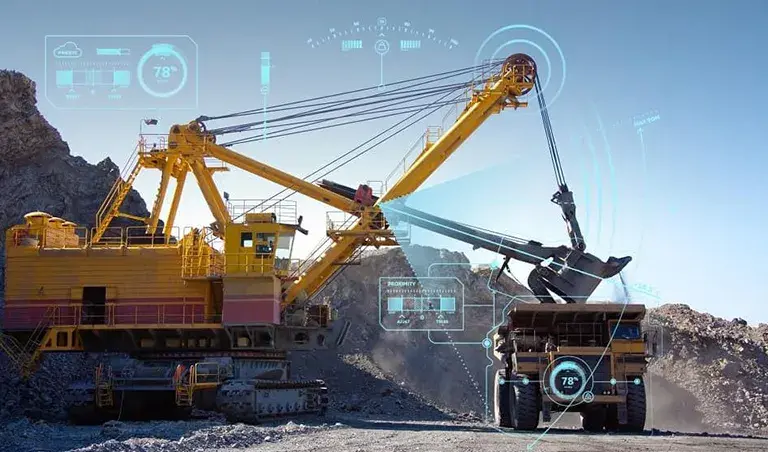Predictive Maintenance & IoT Impact on Mining

The mining industry is one of the oldest & most hazardous commercial sectors where the use and implementation of modern technology are very gradual. Mining companies utilize a plethora of expensive equipment in a high stakes & cost environment. In these cases, asset health is critical to the safety & profitability of the mine.
This is where IoT-driven Predictive maintenance can be a gamechanger. It has the potential to collect and analyze environmental and equipment data instantaneously and conduct real-time risk and area evaluation. It reduces the risk of downtime & loss due to machine failure and reduces overall maintenance & spare part costs of high capital-intensive machinery. The application of IoT in the mining industry is quintessential because of its advantages for large-scale operations in mining, where the operating environment is constantly changing & workforce operates in a compact, adapting, and potentially hazardous environment.
Let’s first try to understand the what makes maintenance for the mining industry difficult:
Challenges in the mining industry
Types of machine maintenance in mining
- Reactive Maintenance/ Run-to-Failure Maintenance: This refers to repairs performed after a machine has already failed and it is unexpected and thus leads to emergency rushed repairs.
- Preventive Maintenance: This refers to any planned or scheduled machine maintenance that aims to identify and repair problems before they cause failure. It can be annual/bi-annual. But it cannot prevent asset failure between two schedules or unnecessary downtime.
- Condition-based Maintenance: It focuses on monitoring the current status of assets to undertake maintenance when evidence of decreasing performance or approaching breakdown is detected.
- Predictive Maintenance: It expands on condition-based maintenance by utilizing instruments and sensors to continuously evaluate machinery performance & flagging off any anomaly and its root cause before it results in a full-blown asset failure.
Predictive Maintenance in mining can cause many benefits – direct & indirect.
Some of the benefits of Predictive Maintenance are:
- Reduced Downtime: Utilizing predictive maintenance, you can anticipate troubles ahead of time, decrease machine downtime, increase uptime by 15-20%, schedule maintenance as needed, and thus extend the life of an old machine by up to 20%.
- Increasing Productivity: It ensures that both planned and unplanned downtime is kept to a minimum, resulting in fewer interruptions to production and a significant increase in overall productivity.
- Higher Production Capacity: Asset availability of high performing & critical assets in mines helps plan and optimize production capacity, which is crucial for effective management & production planning and staying on schedule.
- Lowered Maintenance & Spare Part Costs: Maintenance and spare part costs are significantly lower for preventative maintenance since all machines in the manufacturing process are continuously monitored and repaired before a problem becomes severe.
- Enhancing Workplace Safety: Predictive maintenance can reduce the risk of work-related accidents by identifying any discrepancies that could lead to an accident on-site. Predictive maintenance ensures a sanitary and healthy environment in the plant while reducing safety risks by up to 14%.
- Proactive Decision Making: The implementation of IoT enables mining maintenance managers to detect when there is a breakdown or a drop in performance, enabling them to react quickly and effectively. In addition, monitoring, obtaining, and analyzing data from particular mining equipment over a period may help them understand how the overall efficiency of the process itself can be improved.
Conclusion
Click here to schedule a demo with our team of experts.










